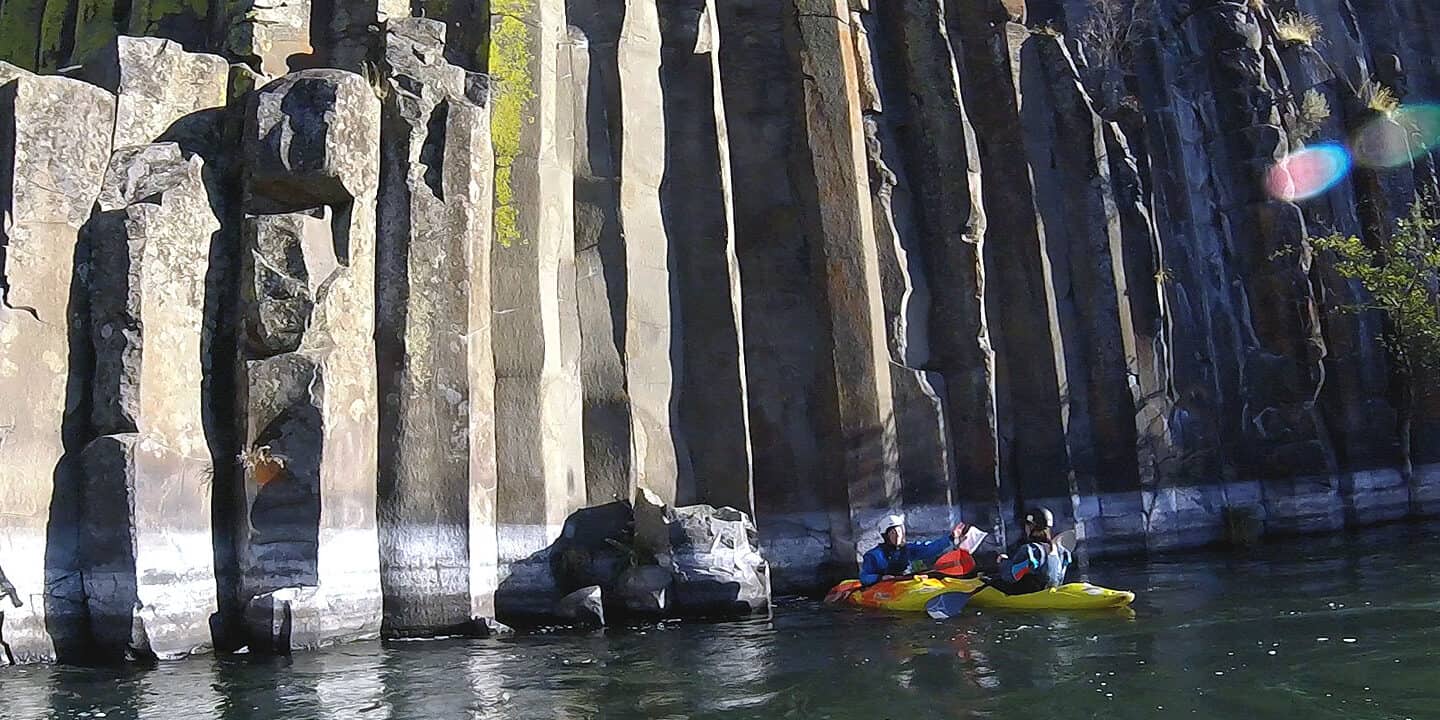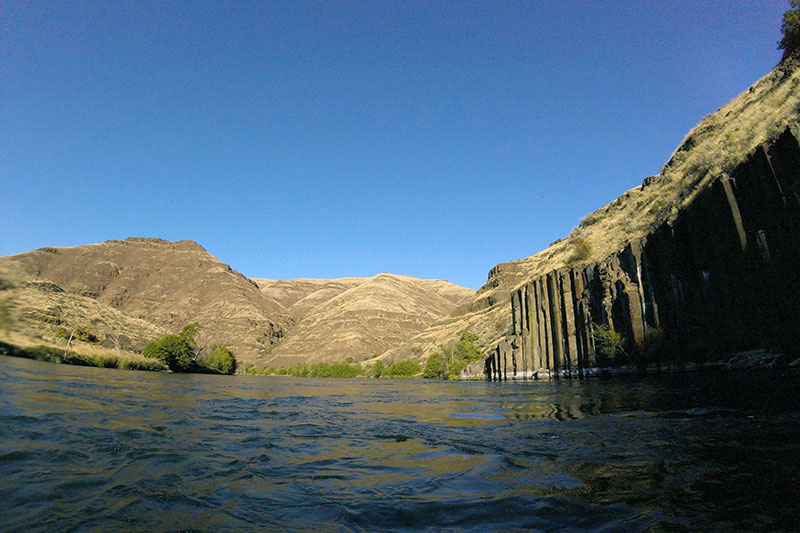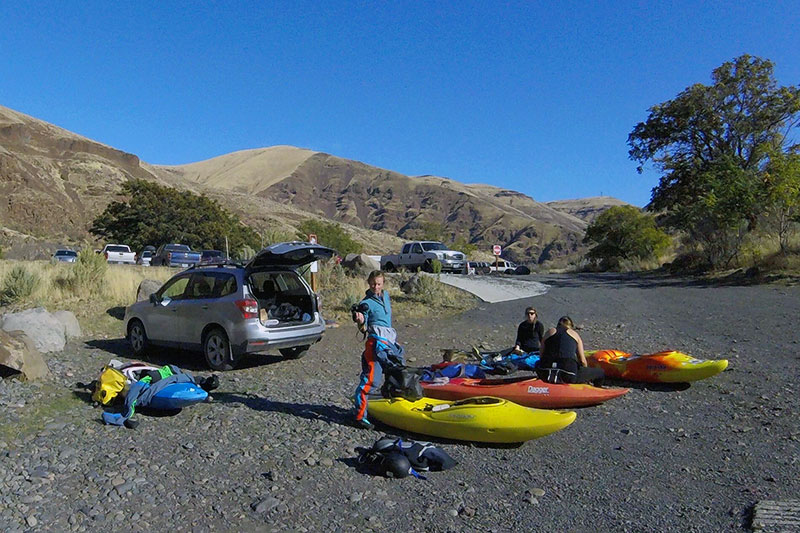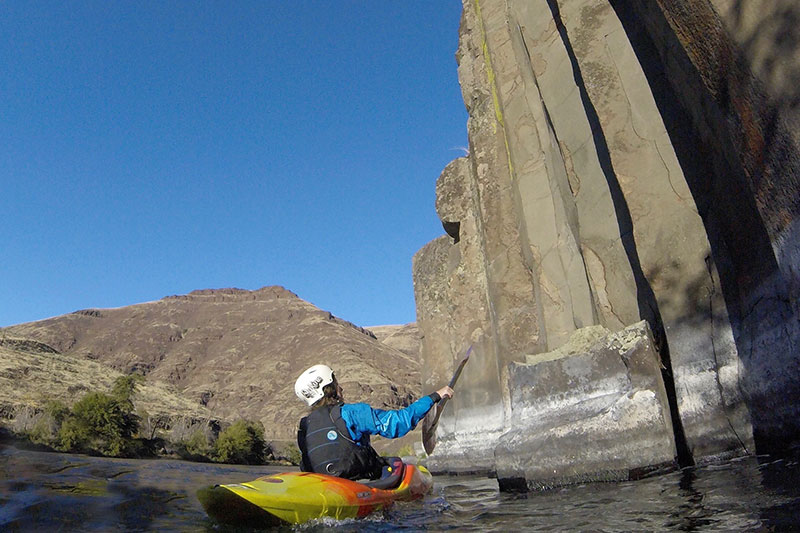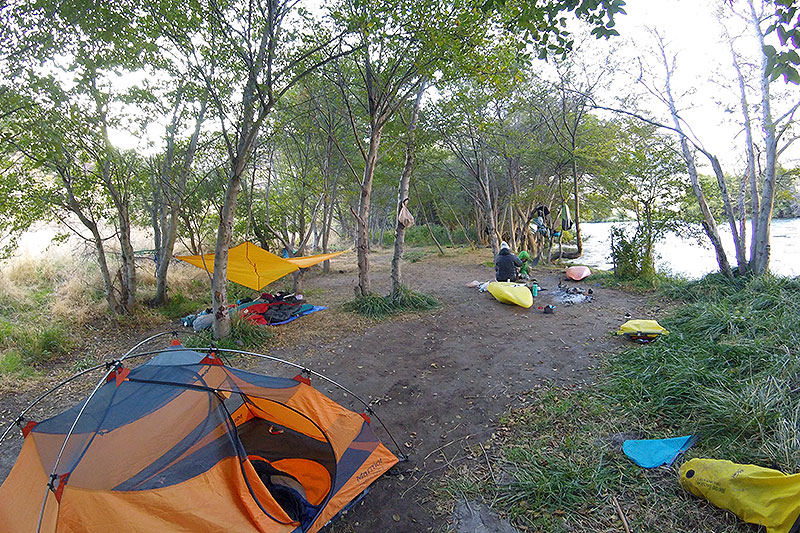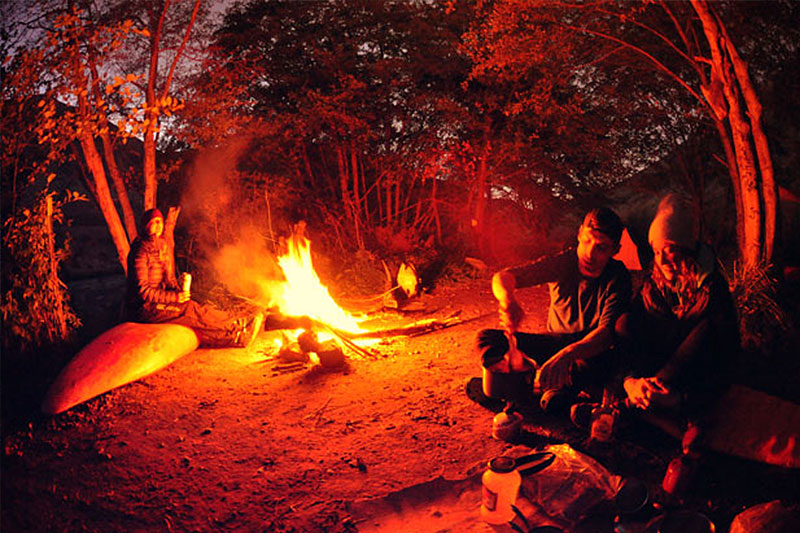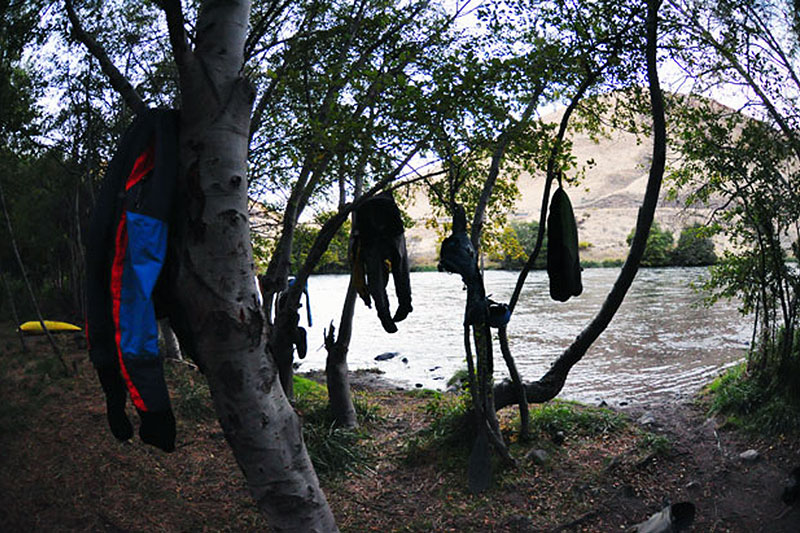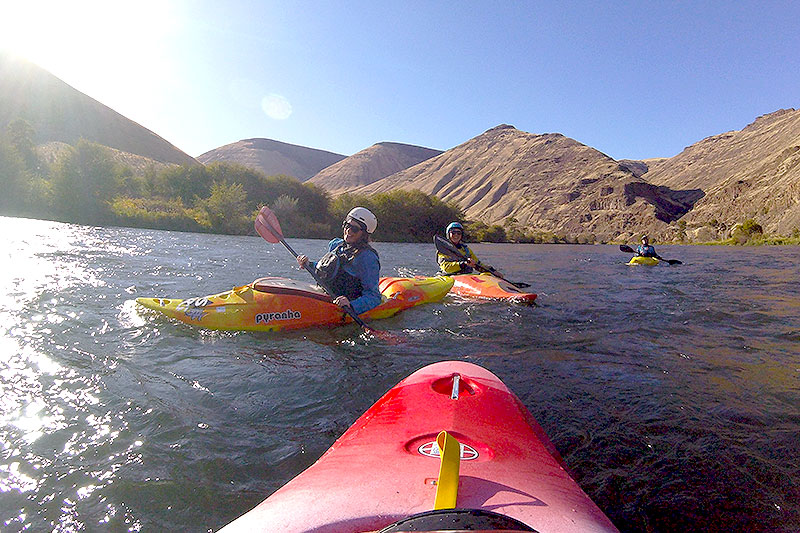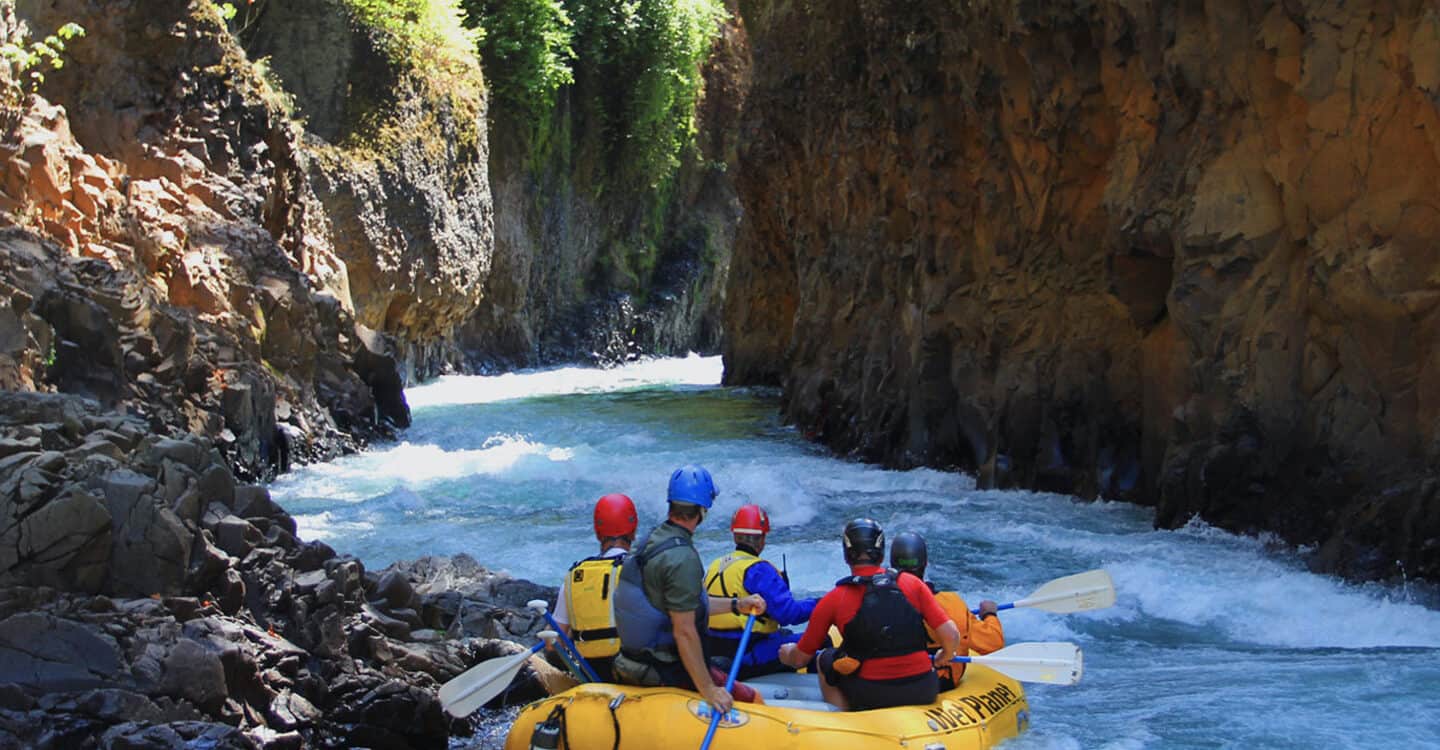I feel most alive amongst the tall trees, towering rock faces, and crashing waves. Its in those places that I leave the part of me that doesn’t need an alarm clock to inspire me to greet the day, Netflix for entertainment, or a typed message for human connection. It’s easy to make excuses not to venture out though, as there will always be urgent work and projects, pressing plans, or someone who needs your attention. Those things don’t go away, and the longer I go without taking a step back, or a step off the trail, the more difficult it is to do so.
It was in such a moment – needing to reconnect with my life but somewhat unwilling to take a pause from work and yard work and car work and dinners and the list goes on, that an invitation was extended for a self-support kayak trip on the Deschutes River.
I created a whole list of excuses as to why I shouldn’t go: I’d never done a self-support kayak trip, I hadn’t made time to kayak in ages and didn’t know if I could even roll at the moment, there were more responsible things I should be doing, and it was kind of cold out. Despite that internal debate though, for the first time in months, I just said yes.
And then there we were, Shilo, Maddie, Jesse, and I sitting at the put-in on a sunny October afternoon, using a very traditional packing method – bracing ourselves against our cockpits and jamming drybags into the sterns of our boats with our feet with a lot of grunting for encouragement.
The section of the Deschutes River that we paddled is a remote and gorgeous 24 mile stretch of fairly mellow water with a handful of fun class II/III rapids on the second day. The river banks were lined with lush groves of trees, some hills rolled on and on while others had dark rock structures carved into them. The columnar basalt was amazing…in some places it seemed to grow out of the river, and in others seemed to have tipped and lay hanging over the banks. We felt like geologists, exclaiming “Oh! Look at this rock!” with every bend in the river.
When the sun began to dip over the hills, we started looking for camp and found a perfect one tucked away in the trees at the base of a scree slope. We set up a little shelter that would surely protect us from precipitation, but not so much from the variety of curious bugs, while Jesse set up the man tent, which in contrast was bug proof but had its own unanticipated hazards when it came to a battle of Jesse vs. zippers in the middle of the night.
We gathered around a fire, glad that we’d brought kayaks as they’re handy for mobile benches, and settled in for the river version of Chopped – creating an acceptable tasty dinner using only pasta, sausage, sauce, bagged wine, a Corona, and a single stove. It’s quite a bit different than what you eat on a multi-day rafting trip! However, it was the adult lunchables we’d brought along for hor’derves that were the highlight of the meal (river people LOVE good cheese). Later that evening, we decided to take a little jaunt up the hillside to star gaze. It was one of the most incredible night skies I’ve witnessed…cold and crisp, with so many stars that it made it hard to distinguish one constellation from the next, and the milky way radiant amongst it all. Once we saw the embers from the fire fade away in the distance, we made our way back to the comfort of our sleeping bags perched upon inch tall air mattresses, successfully navigating around any lurking snakes but not having quite the same luck with the bristles and the burs.
We rose as the morning light began to trickle through the canopy of branches, watching a blue heron swoop down and perch on the bank less than 20 feet from us. As we ate our extravagant breakfast of instant coffee and bagels, we combed each other’s hair for debris from our little night hike and reminisced over who stole whose sleeping pad. Packing our boats seemed somewhat more difficult on day two – despite having emptied our boats of food and water, we lacked the same organizational methods from the first day. Eventually we were dressed and warmed up from our efforts to return our drybags to their snug compartments and ready to launch.
We’d intentionally made the decision to try our hand at self-support kayaking on this stretch because anything of consequence would be on the second day, where it wouldn’t matter as much if things got wet. I hadn’t fully anticipated the difference in how my kayak would move with the additional weight. It not only sat lower in the water, but I also didn’t have much confidence using my hips in a heavier boat. I ended up relying mostly on paddling to stabilize myself, which worked but felt awkward. I picked much more conservative lines than I typically would, and skirted practically everything that was skirtable. Where there weren’t obvious skirt lines, I found new ones into boiling eddies, paddled in circles, then wiggled my way to the bottom of the eddies to avoid having to peel out. I followed friends through rapids that I normally would have been quite confident in and felt skittish just ferrying through currents. To be frank…I felt like a total beginner. Everything looked bigger and more nerve wrecking to me. Horizon lines, waves, holes, surfing…they were a bit scary rather than exciting.
The trip reiterated the notion of being a life-long beginner. Doing anything new is a bit nerve wrecking, but it always helps to be surrounded by a great support system. Everyone was encouraging and in good humor as I adjusted to the changes, particularly when I made the mistake of trying to balance the weight in my boat between the bow and stern on the first day, which resulted in barreling through even the smallest of waves instead of gliding over the top. We celebrated when we arrived at take-out, feeling a sense of accomplishment over simply staying upright.
While it was inspiring to try something new and to embrace the nerves and thrills of feeling like a beginner again, it was the concept of disconnecting to reconnect that I was most reminded of as we drove away from the Deschutes. Life will always have things going on, and I need to remember to make space to breathe in the sunshine and snowstorms, to stand in awe of untouched landscapes, to seek something unknown, and to connect with the wonderful people around me with uncontrollable laughter, hugs, and a few tears.
To get started on the path to being able to do your own self-support adventures, join one of Wet Planet’s 2 and 3 day beginner kayak courses, intermediate course, or private kayak classes with our experienced instructors. If you don’t live in the area, ask around…there are many great kayak schools around the nation!
Originally published by Courtney Zink on October 25, 2017.

